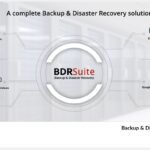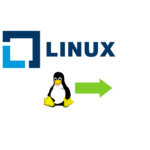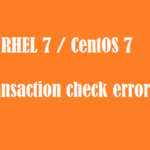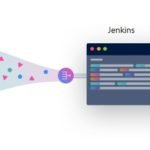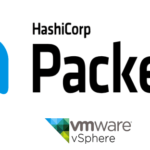Protecting customer data on their workstation and laptop is very essential. Most of the uncommitted valuable data reside in Laptops and Desktops. Most Organizations protect the endpoints using regular backups and recover the data in no time in case of hardware failures or accidental deletion. This article will walk you through how to install and […]
CentOS
How to extend the root filesystem in RHEL 8 / CentOS 8?
How to extend / (root) filesystem without reinstalling the operating system ?. Is it possible to extend the root filesystem without destroying data? Is it possible to extend on the fly? The answer is yes if you are using LVM. This article will walk you through extending the root filesystem on Redhat Linux 8 (RHEL […]
How to install pip on RHEL 7 / CentOS 7 ?
Pip is a platform independent package management software. Pip stands for “Pip Installs Packages”. The Python Packaging Authority (PyPA) maintains many of the python relevant projects. The software developed through the PyPA is used to package, share, and install Python software and to interact with indexes of downloadable Python software such as PyPI, the Python […]
Downgrading Ansible Engine on CentOS 7/ RHEL 7
How to downgrade Ansible engine on RHEL 7 / CentOS 7 ?. If you install ansible engine from EPEL repository, it will install the latest ansible engine. I had a hard time with latest ansible engine due to incompatibility with specific tasks. For example, Openshift deployment works fine with Ansible engine 2.7 and fails with […]
RHEL 7 / Cent OS 7 – “fwupdate-efi” conflicts with “grub2-common”
Have you got the package conflict error while installing the specific package on RHEL 7 /CentOS 7? Frequently, “fwupdate-efi” package conflicts with the “grub2-common” package in RHEL 7 / CentOS 7 environment. This article will provide the step by step procedure to resolve package conflict errors. In general, if you get such error, you must […]
Ansible – Reboot Server Using Playbook and Wait for come back
Ansible is a simple configuration management tool. Open source community keeps trying to make the code much simpler on the newer version. Prior to Ansible engine 2.7, To reboot the target hosts, we need to define a block of code to reboot the server and wait until the hosts to come back. Most of the time. making the configuration changes or installing […]
Jenkins – Store Console Output in Linux Filesystem – Artifacts
How to store Jenkins job’s console output in another system? There are much opensource software is available to store the logs and retrieve logs in time. Jfrog is one of the most famous artifact solutions. Here, we will be using native Linux/Unix commands to pull the Jenkins logs and store it in local/NFS filesystem for […]
Packer Automation – Build Redhat/CentOS VM on VMware vSphere
In this article, we will be walking through the building of Redhat Enterprise Linux 7/CentOS 7 VM using ISO on VMware vSphere environment. Packer is very useful to build your base images on the cloud and on-premise. Packer is an opensource tool and developed by HashiCorp. HashiCorp owns very famous tools like Vagrant, Consul, and […]
How to Install and Configure Jenkins on Redhat/ CentOS 7?
Installing and configuring Jenkins on Redhat Linux / CentOS is very straight forward. Jenkins is a very famous tool among developers. Jenkins is an open source automation platform written in Java. The creator of Jenkins is Kohsuke Kawaguchi and it has been developed when he was working at Sun Microsystems. Jenkins supports most of the […]
How to Install Ansible Engine on CentOS / RHEL
Installing the Ansible engine and set up the environment is pretty straightforward. Ansible engine can be installed on the majority of Linux flavors which includes CentOS, RHEL, Ubuntu, and Debian but it doesn’t support Windows, Solaris, and AIX. But there are no restrictions to participate as ansible clients. Ansible uses the SSH protocol to manage the Unix and Linux […]
